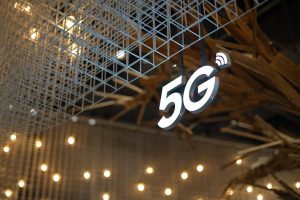
Bridging the Digital Divide: How African Fiber Companies are Transforming Connectivity
Bridging the Digital Divide: How African Fiber Companies are Transforming Connectivity
Bridging the digital divide is a critical issue in Africa, where many communities lack access to reliable and affordable internet connectivity. African fiber companies are playing a vital role in addressing this challenge by expanding fiber optic networks and increasing internet access across the continent. The expansion of fiber optic networks is transforming the way people live, work, and communicate in Africa, and is having a significant impact on the continent’s economic and social development.
The digital divide in Africa is a significant challenge, with many communities lacking access to basic telecommunications services, let alone high-speed internet. According to the International Telecommunication Union (ITU), in 2020, only 22% of the population in Africa had access to the internet, compared to 83% in Europe and 94% in North America. This lack of access to the internet is a major obstacle to economic development, as it limits access to information, education, and job opportunities.
The Role of African Fiber Companies
African fiber companies are working to bridge the digital divide by expanding fiber optic networks and increasing internet access across the continent. These companies are investing heavily in the development of fiber optic infrastructure, including undersea cables, terrestrial fiber optic cables, and last-mile connectivity solutions. The expansion of fiber optic networks is enabling the delivery of high-speed internet services to more people and places, and is transforming the way people live, work, and communicate in Africa.
One of the key players in the African fiber market is Liquid Telecom, a leading pan-African telecommunications company. Liquid Telecom has built a network of fiber optic cables that spans over 70,000 kilometers, connecting 13 countries in Eastern, Central, and Southern Africa. The company’s network provides high-speed internet connectivity to businesses, governments, and individuals, and is playing a critical role in bridging the digital divide in Africa.
Another major player in the African fiber market is MTN, a leading telecommunications company with operations in 21 countries in Africa and the Middle East. MTN has invested heavily in the development of fiber optic infrastructure, including undersea cables and terrestrial fiber optic cables, and is working to expand its network to reach more people and places.
Transforming Connectivity in Africa
The expansion of fiber optic networks in Africa is transforming connectivity on the continent, and is having a significant impact on economic and social development. With access to high-speed internet, people in Africa are able to access information, education, and job opportunities that were previously out of reach. The expansion of fiber optic networks is also enabling the delivery of critical services, such as healthcare and financial services, to more people and places.
The impact of the digital divide on economic development in Africa cannot be overstated. According to a report by the McKinsey Global Institute, the digital economy in Africa could contribute up to $300 billion to the continent’s GDP by 2025, if the right investments are made in digital infrastructure. The expansion of fiber optic networks is critical to realizing this potential, and African fiber companies are playing a vital role in making this vision a reality.
Challenges and Opportunities
Despite the progress being made in expanding fiber optic networks in Africa, there are still significant challenges to be overcome. One of the major challenges is the lack of funding for digital infrastructure development, particularly in rural and underserved areas. The cost of building and maintaining fiber optic networks is high, and many communities lack the resources to invest in this critical infrastructure.
Another challenge is the regulatory environment, which can be complex and unpredictable in many African countries. The lack of clear and consistent regulatory frameworks can make it difficult for fiber companies to operate and invest in the continent. However, there are also opportunities for innovation and growth in the African fiber market, particularly in the areas of last-mile connectivity and digital services.
The expansion of fiber optic networks in Africa is also creating new opportunities for innovation and entrepreneurship, particularly in the areas of e-commerce, digital payments, and online education. With access to high-speed internet, entrepreneurs and small businesses are able to reach new markets and customers, and are able to access the resources and tools they need to grow and succeed.


